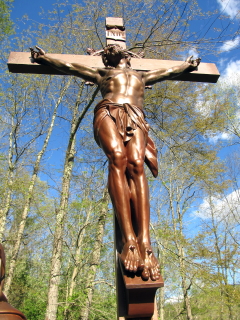
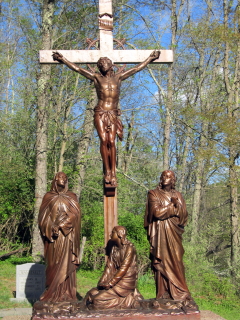
Magnificent statue of crucifixion is just around the bend
By Bob Weaver
Traveling around the bend in a narrow West Virginia hollow and coming upon a large sculpture of Christ on the cross was an impressive moment.
Traveling to the backwoods site was my longtime friend of 40 years, historian Jim Mullooly, who died tragically of an accident in 2020. The Wheeling resident reveled at the artifacts that stood before us.
The large steel, bronze coated statue is in the long faded community of St. Clara in Doddridge County, established in 1846 by Joseph Diss DeBar, once having an estimated population of 3,000 citizens, mostly German-Swiss immigrants.
The crucifixion scene has four figures, with the central figure of Christ. At the base of the cross is a kneeling figure flanked by two standing figures.
The outstanding addition to the St. Clara community arrived in the hamlet in 1921, after it was purchased in France to be erected on the high ground in the cemetery at now closed St. Clara Catholic Church.
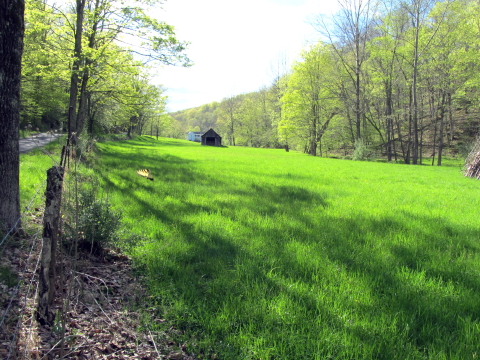
The green valley of the St. Clara community is now sparsely settled
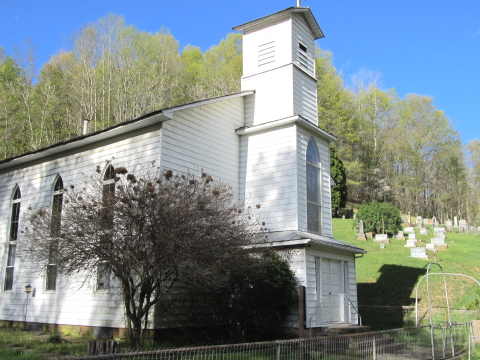
Historic St. Clara Catholic Church was established in 1875
The tableaux of statues was discovered in France by St. Clara priest, Father Camile Delaux while he had been serving as a chaplain during World War I.
On Delaux's return, he told his congregation of the tableaux and the devout farmers of the parish quickly raised $1,500 to purchase them.
The statues were sent by ship to Hoboken NJ and then by train to West Union, transferred to the Long Run Railroad for their journey south to the Leopold community.
They were laboriously transported on to St. Clara by a dozen energetic men and four teams of horses.
Over 90 years later, the statues grace the quiet valley.
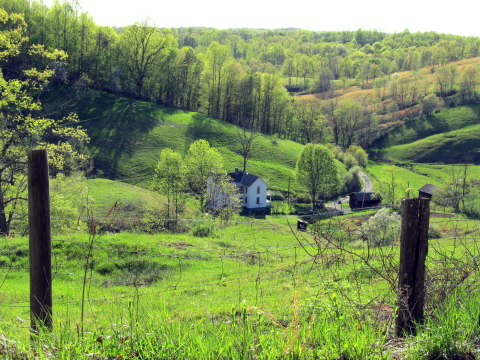
The community still has a few old homesteads, here the Edward Kreyenbuhl farm
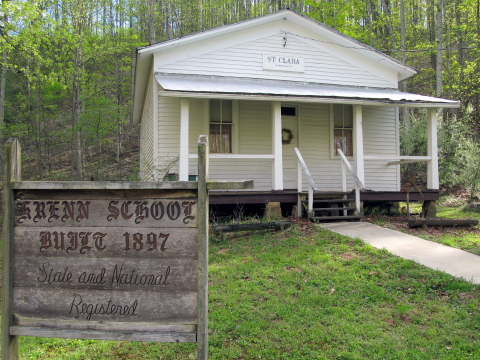
The Krenn School, built in 1897, is
on the National Historic Register
SANTA (SAINT) CLARA
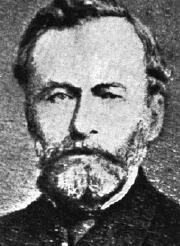 Land agent and designer of the West Virginia State Seal, Joseph Diss Debar (1820-1905), a well-educated native of France, migrated to Boston in 1842.
Land agent and designer of the West Virginia State Seal, Joseph Diss Debar (1820-1905), a well-educated native of France, migrated to Boston in 1842.
In 1846 Diss Debar was hired by John Peter Duman to developed his holdings in Doddridge County, near the Gilmer-Ritchie line and DeBar moved to West Union.
Diss Debar was educated in the classics and the sciences and was fluent in several languages and a talented artist.
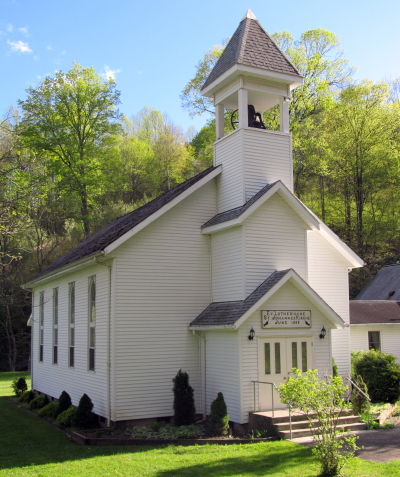
The Lutheran Church, built in 1888,
still graces the historic settlement
Debar spent much time in Clarksburg and Parkersburg where his colorful personality and striking mustached appearance soon made him a social leader, while he moved around the area drawing sketches of remote West Virginia, including Calhoun County.
See EARLY DISS DEBAR SKETCHES SHOW FAMILIAR SCENES - Bear Fork Wilderness Sketched In 1846, Civil War Dan Duskey In Prison
He sold much of the land to the Germans and Swiss, who came to America to live in the remote area.
Santa Clara was the first deliberate effort to recruit German immigrants and to establish an exclusively German settlement in what was to become West Virginia.
Debar was also responsible for the establishment of another German-Swiss colony in western Virginia at Helvetia, Randolph County.
The developments were not without controversy, many of the immigrants claiming DeBar misrepresented the area as a land of milk and honey.
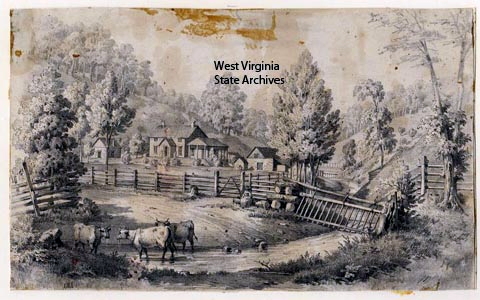
Sketch DeBar made of his own house at Santa Clara
By 1852, Diss DeBar had built a house at the mouth of Carter Camp Run on Cove Creek. In 1856, he named the post office and settlement "St. Clara" after his deceased wife.
It's all just around the bend.
| 


